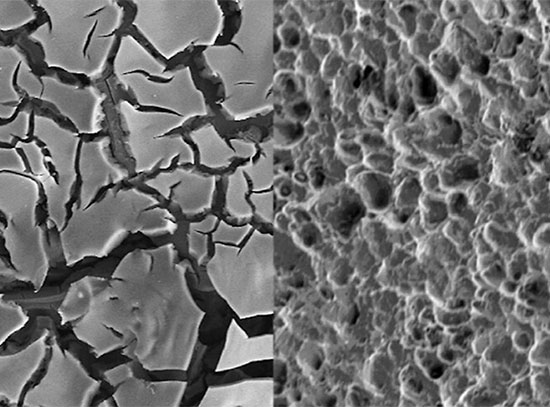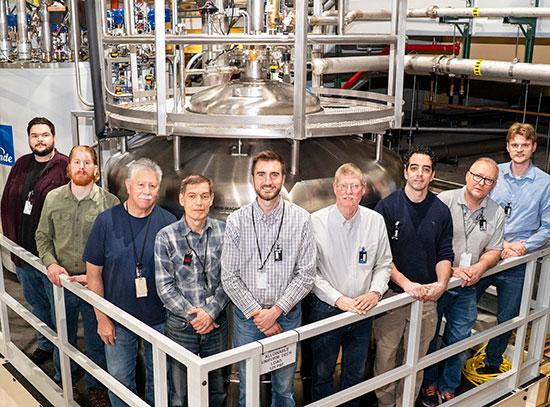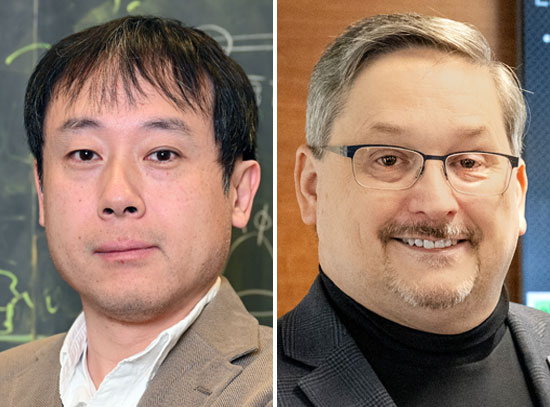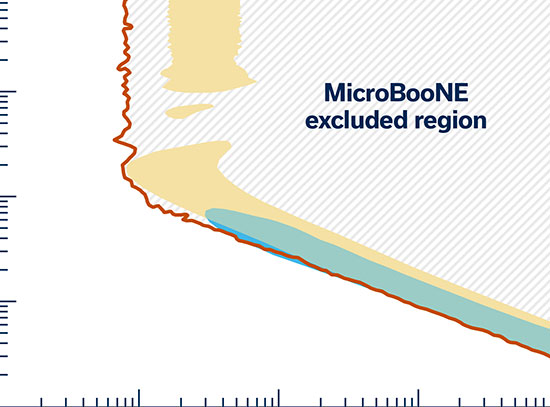PubSci Enters the Quantum Realm
Brookhaven Lab's science café and conversation series continues with a casual chat about quantum research
June 13, 2024
By Kelly Zegers and Danielle Roedel
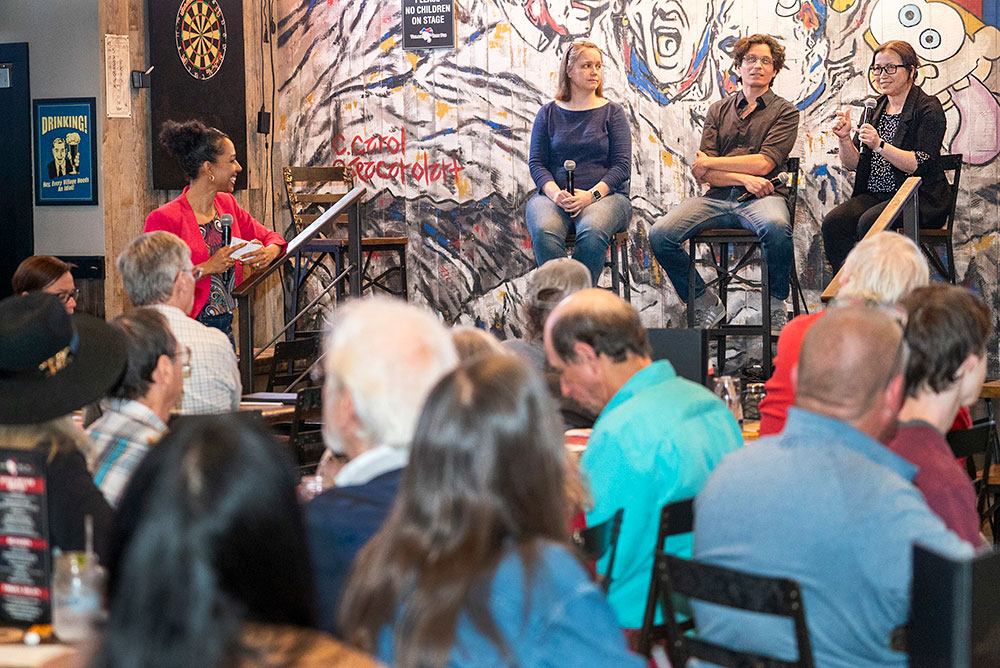 enlarge
enlarge
Community members filled the seats at The Village Idiot in Lake Grove on May 21. (David Rahner/Brookhaven National Laboratory)
The U.S. Department of Energy’s (DOE) Brookhaven National Laboratory hosted the latest installment of its science cafe and conversation series, PubSci, on May 21, 2024. Members of the local community headed to The Village Idiot in Lake Grove, New York, for a chance to learn how Brookhaven scientists are “Entering the Quantum Realm.”
Nearly 90 community members came out for the casual chat, bringing their curiosity about how scientists are untangling the strange behaviors of matter at the smallest scale for advanced computing, communications, and materials science.
Julian Martinez-Rincon, a quantum scientist with Brookhaven’s Instrumentation Department, shared how teams at the Lab and Stony Brook University (SBU) are advancing quantum internet infrastructure between the two institutions — and beyond.
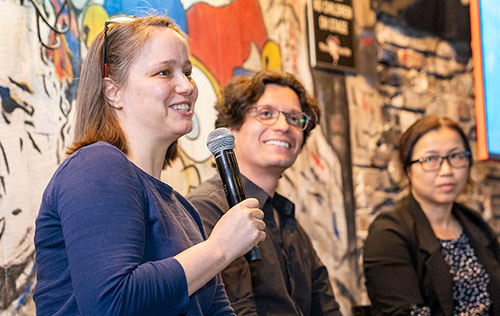 enlarge
enlarge
Panelist Andi Barbour, left, on stage at PubSci with Julian Martinez-Rincon and Meifeng Lin. (David Rahner/Brookhaven National Laboratory)
This network leverages commercial cables to transmit “entangled” photons between quantum nodes throughout Long Island and the New York City metropolitan area. Photon pairs can be generated in Brookhaven’s Quantum Information Science & Technology Laboratory, for example, and then transmitted approximately 44 miles in different directions to other nodes, like SBU.
Despite the separation, the photons are still related, or entangled, so taking a measurement of one photon can reveal information about its pair. This property is key for storing and transmitting quantum information. And it makes for secure, speedy, and precise quantum communications.
“Something that we have been very aware of is that this cannot not be a big quantum laboratory on a large scale — this has to be built like the networks of the classical internet as we know it today, and that’s where we have to change our perspective,” Martinez-Rincon said. “We have to take what we have and bring it up to the point that we can actually do this quantum phenomenon at a distance, and I think that’s so amazing.”
The remaining two panelists discussed another quantum question from two different perspectives – materials and algorithms.
Andi Barbour, a beamline scientist at the National Synchrotron Light Source II (NSLS-II), a DOE Office of Science user facility at Brookhaven Lab, shared how scientists use ultrabright X-rays to explore the properties of materials to develop quantum bits. Also known as qubits, these small yet complicated devices are the building blocks of quantum computers. An NSLS-II beamline can be thought of as a very specific X-ray microscope, Barbour said, enabling scientists to study parts of, or whole, qubits. Scientists’ goal is to understand why certain qubit materials hold onto quantum information for longer amounts of time than others.
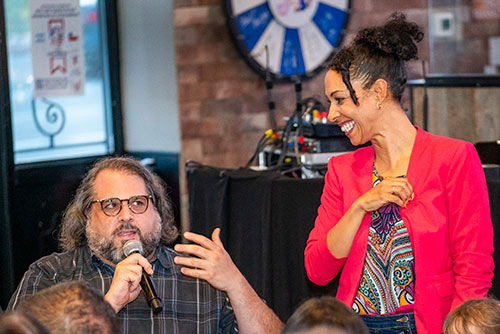 enlarge
enlarge
PubSci attendees were encouraged to ask questions during the event. (David Rahner/Brookhaven National Laboratory)
“NSLS-II is super cool because you don’t have to chop a qubit up to look at the individual pieces,” Barbour said. “You can look at it as a whole, and maybe one day we could use X-rays to watch it while it’s operating."
Once scientists like Barbour figure out the best ways to fabricate reliable qubit devices — and how to make them as small as possible so more of them can fit in a single quantum computer — others will use them to build scalable quantum computers.
Meifeng Lin, who leads the high-performance computing group at Brookhaven’s Computational Science Initiative, shared insights on how quantum computing can be used once the qubits are small enough to work together in a singular device. Theoretical physicists, for example, could carry out complex calculations to explore how the universe works at a fundamental level.
“These quantum properties allow us to calculate certain problems that we cannot on classical computers, either much faster or we can solve an entirely new class of problems,” Lin said.
She also emphasized that current state-of-the-art qubits don’t retain quantum information for a long time — only a few seconds at most. But to perform meaningful computations, scientists need many more qubits that can retain information for much longer.
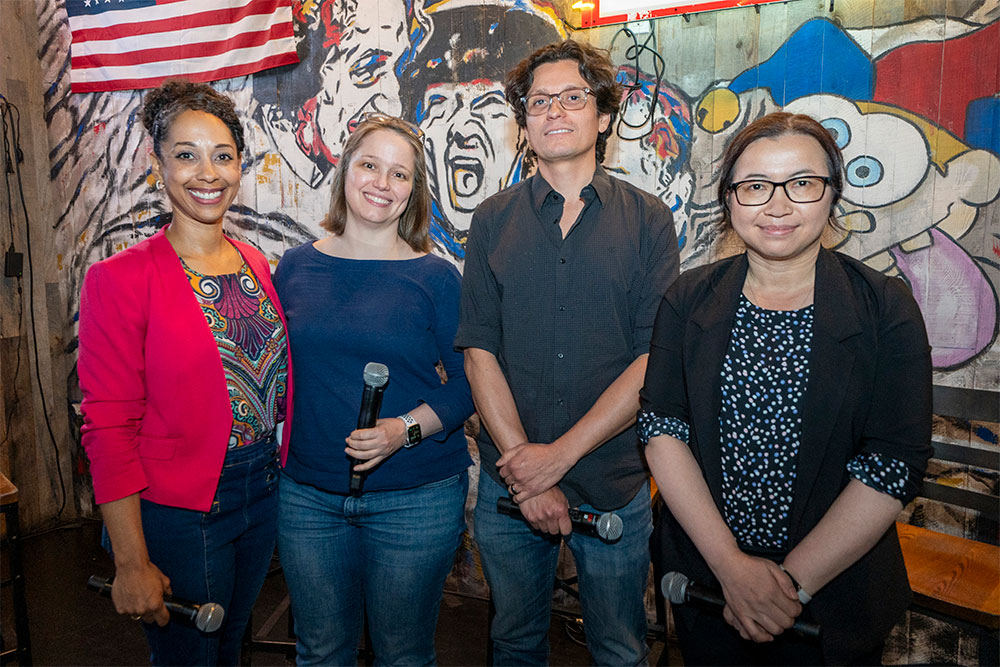 enlarge
enlarge
Kahille Dorsinvil, left, moderated the discussion with panelists Andi Babour, Julian Martinez-Rincon, and Meifeng Lin. (David Rahner/Brookhaven National Laboratory)
Together, the panelists demonstrated the range of expertise found across Brookhaven Lab and the spirit of collaboration at the forefront of quantum research.
For example, Barbour noted, the Center for Functional Nanomaterials, a DOE Office of Science user facility at Brookhaven, carries the capabilities and expertise to fabricate quantum materials for observations at NSLS-II. In addition, Brookhaven leads the Co-design Center for Quantum Advantage (C2QA), a collaboration of researchers from industry, academia, national labs, and research centers who are “co-designing” quantum materials, hardware, software, and algorithms.
Since 2014, PubSci has offered the Long Island community a chance to see a casual side of the cutting-edge research happening every day at Brookhaven Lab and chat with the Lab’s expert scientists over a drink. The series hops around Long Island, covering different topics from the Big Bang to tomorrow’s technologies.
Stay tuned for an announcement on the next PubSci!
Brookhaven National Laboratory is supported by the Office of Science of the U.S. Department of Energy. The Office of Science is the single largest supporter of basic research in the physical sciences in the United States and is working to address some of the most pressing challenges of our time. For more information, visit science.energy.gov
Follow @BrookhavenLab on social media. Find us on Instagram, LinkedIn, X, and Facebook.
2024-21864 | INT/EXT | Newsroom




